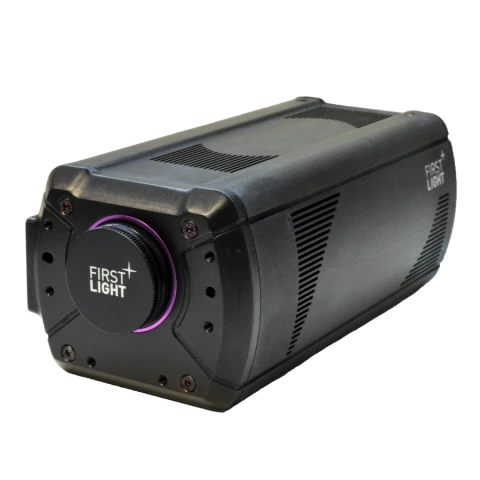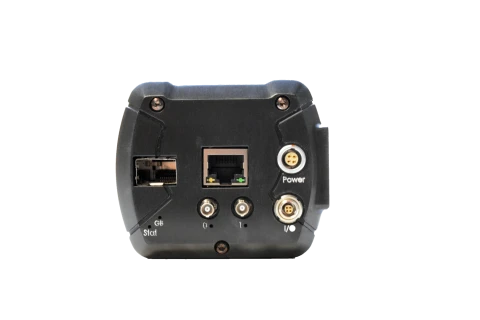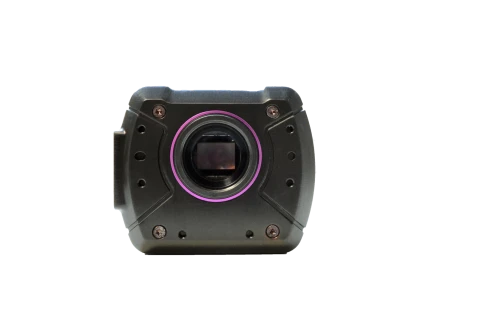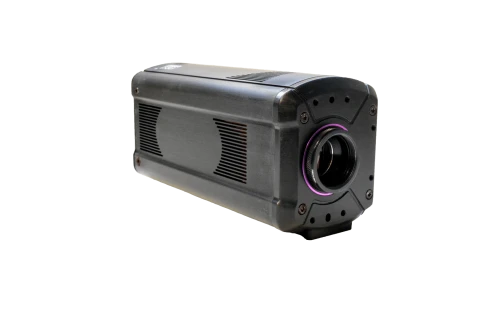Description
C-BLUE One (formerly C-MORE) is an ultra-high performance scientific CMOS camera specifically designed for demanding imaging applications in the visible range (400 nm – 1000 nm).
The architecture of the camera has been designed to integrate one of three different new generation sensors: thanks to this flexible design, C-BLUE One is able to cover the largest scope of applications.
The camera can be tailored to be the best pixel size, resolution, and frame rate compromise for your use case:
- C-BLUE One 0.5MP: 812×612 pixels, 9 μm pitch, 1594 fps
- C-BLUE One 1.7MP: 1608×1104 pixels, 9 μm pitch, 662 fps
- C-BLUE One 7.1MP: 3208×2200 pixels, 4.5 μm pitch, 207 fps.
C-BLUE One Series | Global Shutter sCMOS Camera
Specifications
| Sensor Type: | sCMOS |
|---|---|
| # Pixels (Width): | 812 |
| # Pixels (Height): | 624 |
| Pixel Size (Square): | 9 um |
| Peak Quantum Efficiency: | 74 % |
| Full Frame Rate: | 1594 fps |
| Bit Depth: | 12 bit |
Features
- High-speed frame rates: Up to 1,594 FPS (0.5 MP), 662 FPS (1.7 MP), and 207 FPS (7.1 MP).
- Back-illuminated stacked CMOS sensor with global shutter architecture.
- Wide spectral range: Operates in the visible range of 400–1000 nm.
- High dynamic range with 14-bit HDR and quantization options of 8 and 12 bits.
- Compact design: H64.1 x W76.2 x L154.3 mm, weighing 1.1 kg.
- Low noise: Readout noise as low as 1.38 e- in the 7.1 MP version.
- Efficient cooling: Stabilized ΔT° of 25°C, with optional liquid cooling plate.
- Compatible with CoaXPress 2.0 and GigE Vision interfaces for fast data transfer.
- Flexible mounting options: Supports C-Mount and CS-Mount configurations.
- Operating temperature range: -10°C to 50°C for versatile use.
- Compatible with SDKs for C, C++, Python, MATLAB, LabVIEW, µManager, and Halcon.
Applications
Astronomy
- Adaptive optics
- Solar astronomy
LGS Wavefront Sensing:
- Space debris tracking
- AO assisted satellite tracking
- Ground based space situational awareness
High-End Industry
- Particle velocimetry
- Rayleigh thermometry
Physics
- Quantum science
- Cold atom imaging
- Plasma physics
- Spectroscopy
Life Sciences
- Fluorescence microscopy
- Single-molecule microscopy
- Live-cell microscopy
Frequently Asked Questions
What is the spectral range of C-BLUE One?
The camera operates in the visible range of 400–1000 nm.
What are the available versions of C-BLUE One?
0.5 MP, 1.7 MP, and 7.1 MP versions are available.
What type of sensor does C-BLUE One use?
It uses a back-illuminated stacked monochrome CMOS sensor with a global shutter.
What is the pixel pitch for each version?
0.5 MP and 1.7 MP: 9 µm; 7.1 MP: 4.5 µm.
What is the maximum frame rate?
Up to 1,594 FPS for 0.5 MP, 662 FPS for 1.7 MP, and 207 FPS for 7.1 MP (full frame, 8-bit).
Does C-BLUE One support HDR?
Yes, it offers 14-bit HDR with high dynamic range.
What are its cooling options?
Stabilized ΔT° of 25°C between case and sensor, with an optional liquid cooling plate.
What is the operating temperature range?
-10°C to 50°C.
Which optical mounts are supported?
C-Mount and CS-Mount.
What are the software compatibility options?
Compatible with µManager, LabVIEW, MATLAB, Python, Halcon, and more.
What are typical applications of C-BLUE One?
Adaptive optics, solar astronomy, fluorescence microscopy, and particle velocimetry.
What is the data interface?
CoaXPress 2.0 (CXP-12) and GigE Vision (10 Gigabit Ethernet or Fiber).
How compact is the camera?
Dimensions are H64.1 x W76.2 x L154.3 mm, weighing 1.1 kg.
What is the readout noise?
0.5 MP: 2.35 e-, 1.7 MP: 2.33 e-, 7.1 MP: 1.38 e- (at 12-bit high gain, 50 µs)
Does it support external synchronization?
Yes, both internal and external synchronization are supported.
Similar Products

Balluff 25GigE Industrial Camera - Highest Performance in All Dimensions
Balluff

Balluff 5GigE Industrial Camera - Lowest Power Consumption in Very Compact Housing
Balluff
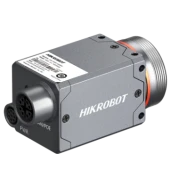
5 MP GigE Area Scan Camera for Industrial Applications
EQ Photonics
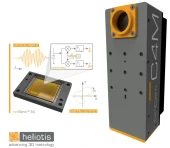
heliCam C4M CMOS Camera
Heliotis AG

SPADλ | Photon-Counting SPAD Linear Array
Axiom Optics
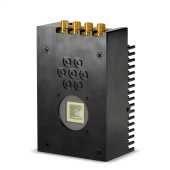
SPAD23 | Photon-Counting SPAD Array
Axiom Optics
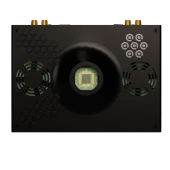
SPAD512 | Photon-Counting Gated SPAD Camera
Axiom Optics
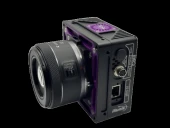
EMC2-103 Light Weight Camera
Illunis
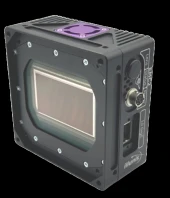
EMC2-152 Global Shutter CMOS Digital Camera
Illunis
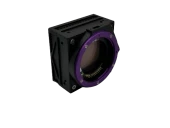
EMC-250 Compact Camera with M.2 PCIe & Camera Link
Illunis
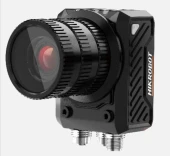
MV-SC6050M-00C-NNN 5MP Mono CMOS Vision System Defects Detection Deep Learning Sorting Machine Vision GigE Camera
Shenzhen City Celebr Crystal Optoelectronic Ltd
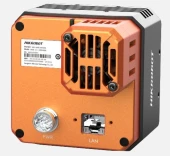
HIKROBOT MV-CH250-90TM-M58S-NF Global Shutter M58-Mount 25MP 41.5fps 1.1" Mono 10 GigE Machine Vision Camera
Shenzhen City Celebr Crystal Optoelectronic Ltd
Thank You!
Your inquiry has been received.
Create an account by adding a password
Why create an account?
- Auto-complete inquiry forms
- View and manage all your past messages
- Save products to your favorites
- Close your account anytime — no hassle
